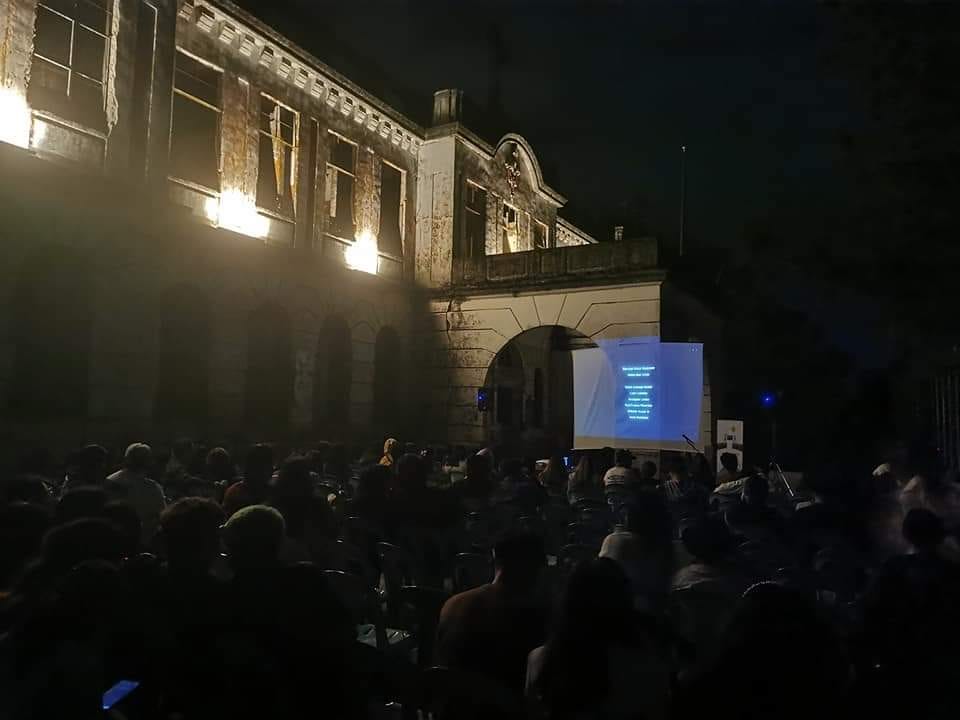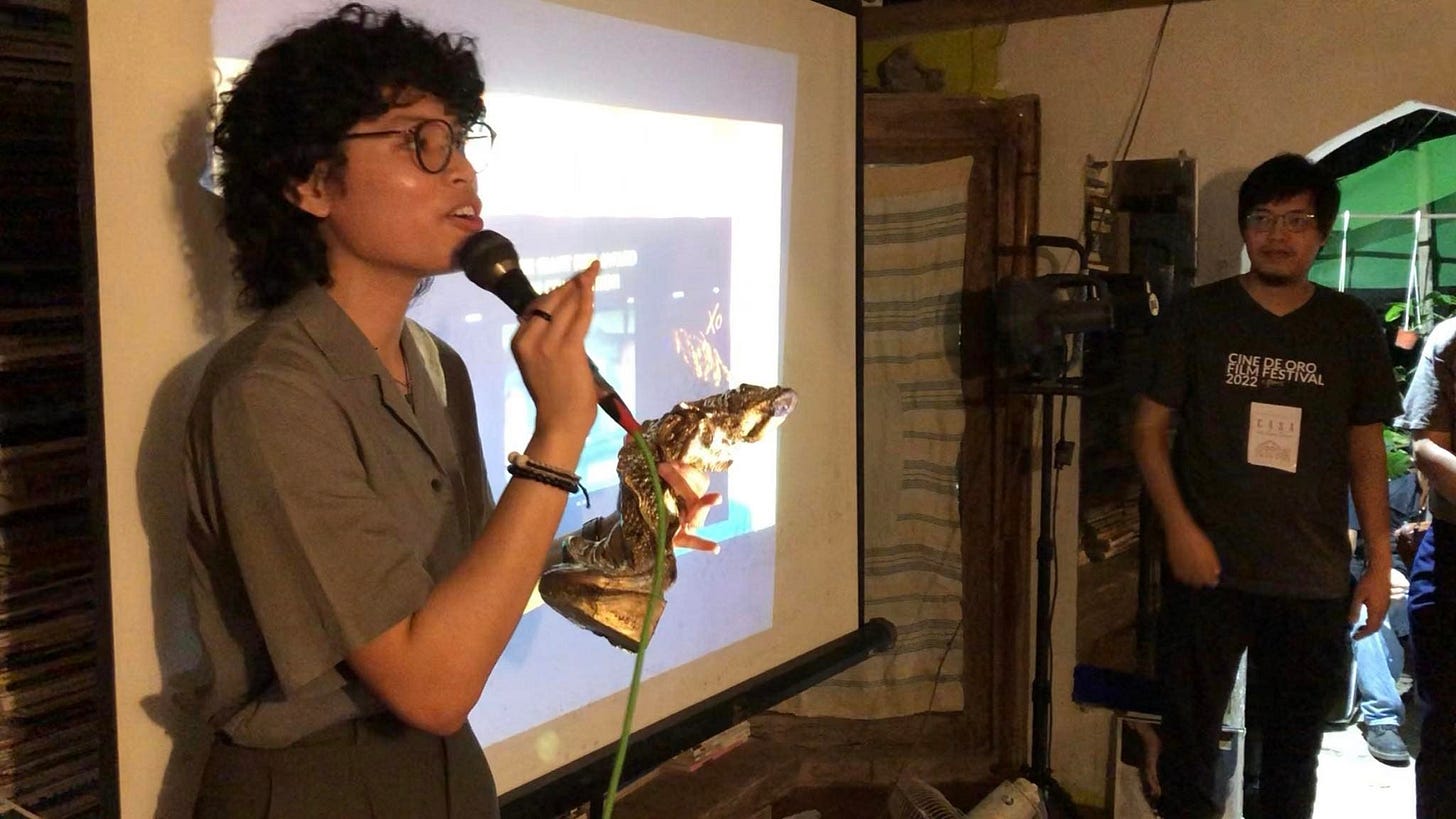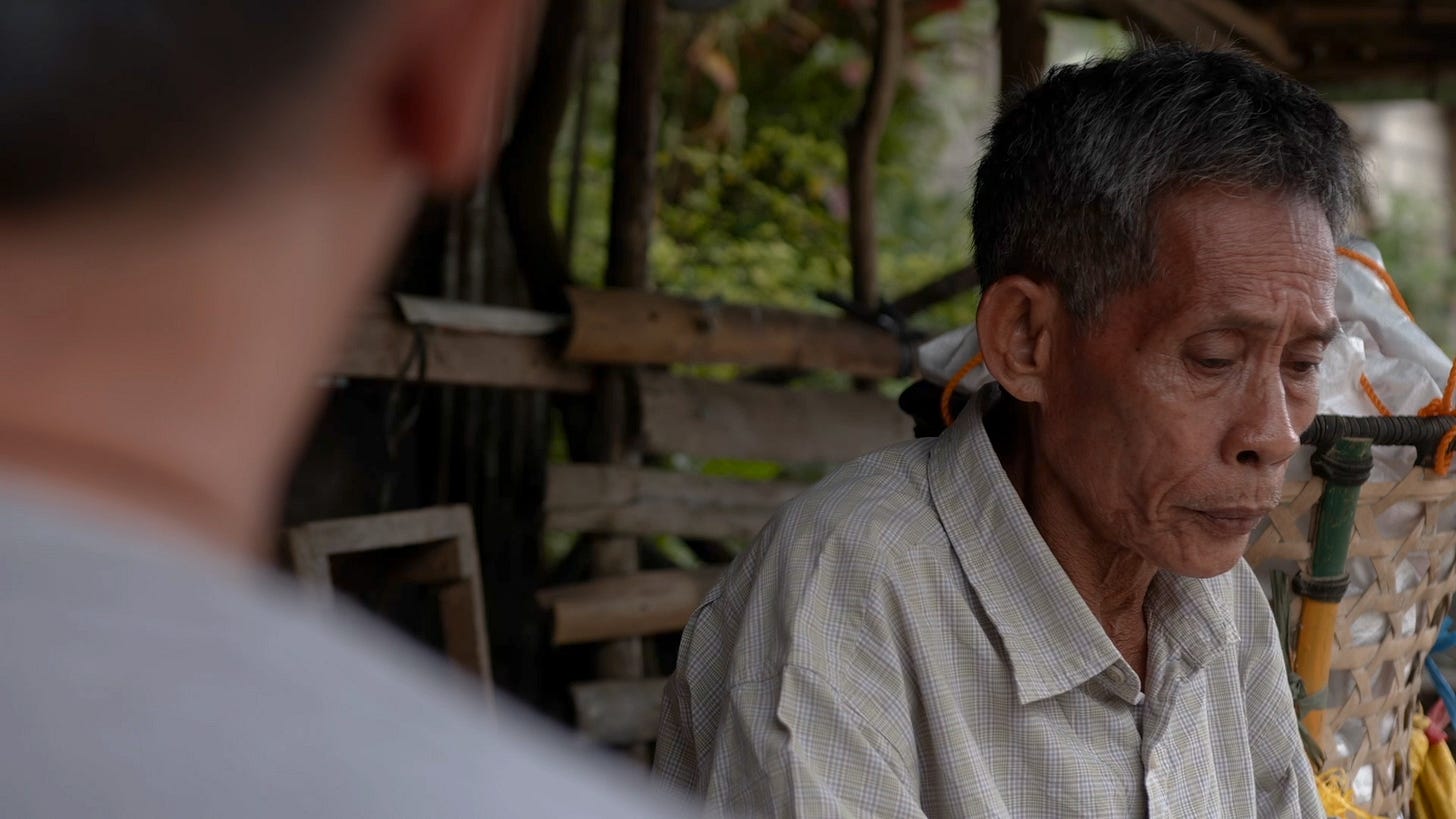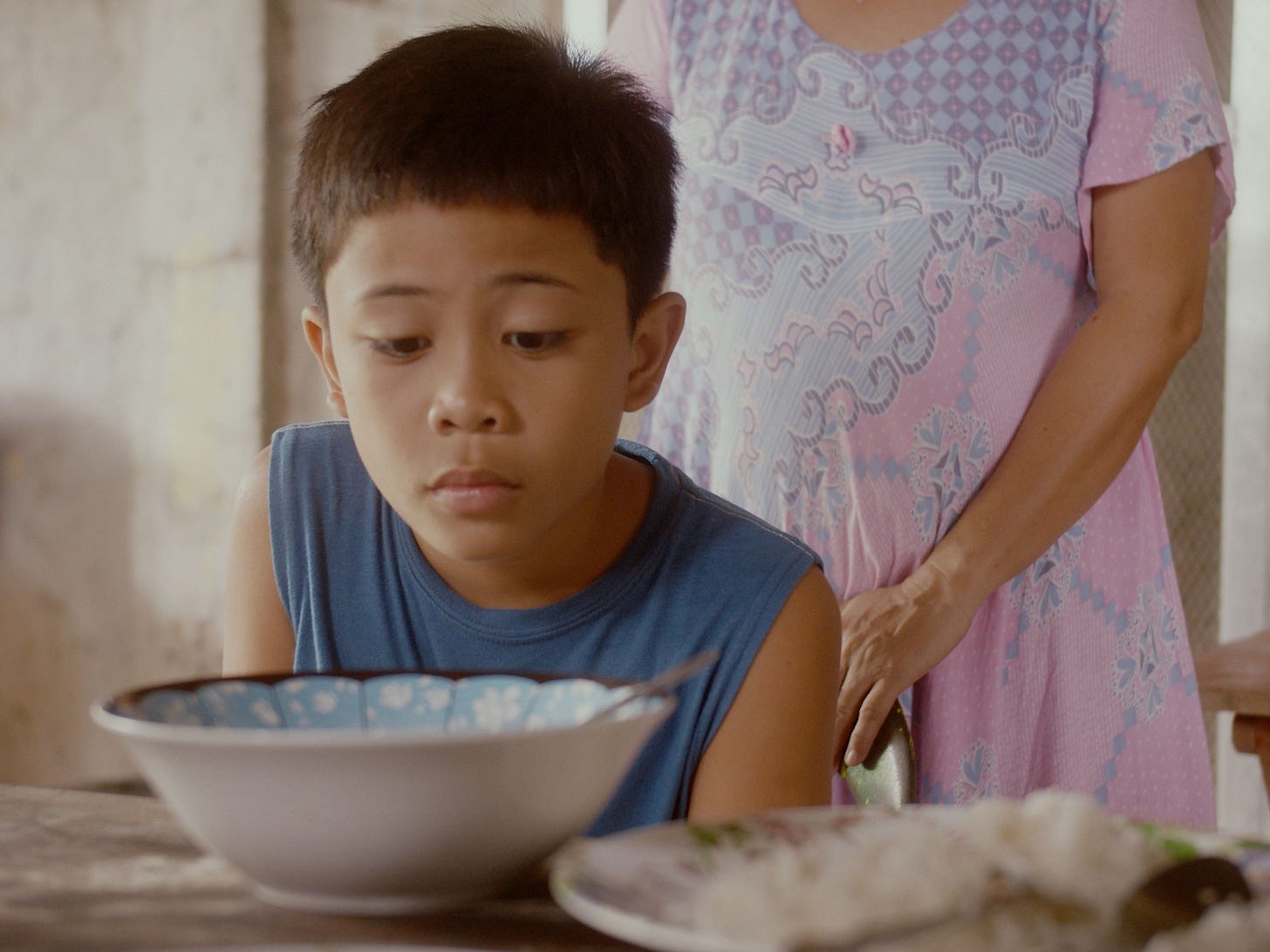Emerging from the pandemic, a persistence of vision from the peripheries
Select Filipino short films from the regions 2022-2023
During the last day of the Cine de Oro Film Festival (CDOFF) in December last year in Cagayan de Oro City, Mindanao filmmakers including myself huddled together inside the hotel we were staying for the festival’s filmmakers’ forum which was supposed to be held at another venue. Going out was a challenge that day as the last typhoon of the year was to traverse that part in Northern Mindanao. The talk, while recorded, was unstructured and informal, and thrown into such a spontaneous setup, we did not know how to start.
But since it was the first time since the festival got back to its physical screenings, we began mulling on the reality of a post-pandemic cinema, its impact on filmmakers. The topic was sparked with the realization that in 2023 no full-length feature was produced from Mindanao. Topografiya by Teng Mangansakan (who was also one of the panelists) was released in 2022, and was probably the last full-length Mindanao film made by an active Mindanao filmmaker working in the region that got a limited release or was exhibited1. This observation was hardly a complaint as the panel were quick to point out the challenging conditions of producing a film if you are not from or based outside Manila–from the limited available grants to competitive access to these grants, compounded by a recovering economy that is emerging from a pandemic. The mainstream film industry has been arguably kept afloat by streaming and local productions led by the likes of Filipino erotica streamer Vivamax who churns out films the quantity of which could shame the pito-pito movies of the 90s.2
An open air screening at The Diplomat Hotel during the Cinema Rehiyon 2023 in Baguio. Photo by the author
And yet, filmmaking in the peripheries continues to flourish. Regional film festivals, as well as school-based and student-led film festivals, online platforms like Cinemata, and theme-based festivals Sine Kabataan by the Film Development Council of the Philippines (FDCP), proved the persistence of the filmmaking spirit, and provided opportunities for young and emerging filmmakers to showcase their works. The Gawad CCP for Alternative Video and Film and Cinema Rehiyon also continue to be exhibition platforms for short films in the Philippines, whether as springboard for new works or showcase of films previously exhibited in other smaller-scale festivals. The Gawad CCP and Cinema Rehiyon also migrated online during the pandemic, with the latter adopting a hybrid format, with most of the films also available online, even when the in-person gathering came back last year.
Surviving the pandemic like a few of its counterparts, CDOFF is one of the newer film festivals in the country’s regional film scene, which has seen a rapid and robust growth of film communities in the last decade—collectives of filmmakers outside Manila who also organize their own film festivals. CDOFF started as a platform for local filmmakers to screen their films, eventually adopting similar programming practices, i.e. local film programs along with inter-regional and ‘open’ film programs, even international shorts, like its regional counterparts: Pelikultura: Calabarzon Film Festival in Luzon, the Binisaya Film Festival in Cebu, and the Mindanao Film Festival, just to name a few. Even with a small audience and the challenge of sustainability, some of these regional film festivals continue to thrive, relying on the DIY spirit, local fundraising and word-of-mouth marketing, but foremost is the passion in which these film communities were founded.
Toni Cañete receives the best film prize during the CDOFF for her film Desilya. The film also won the same prize at the Mindanao Film Festival a week prior. Photo from the CDOFF page
Twilight years, ties that bind
The CDOFF best film went to Desilya by Toni Cañete, a short film about a homecoming of a teen raised in the US and an intergenerational portrait of estranged mothers and daughters. (It is also a homecoming of sorts for the young filmmaker, who hails from CDO but studied at the University of the Philippines’ Film Institute in Metro Manila.) But the film’s homecoming plot is eclipsed by the grandmother’s remorse-dumping, as Cañete utilizes the road-movie trope to unravel a chronicle of missed chances and abandoned dreams weighed down by the past. In driving terms, ‘desilya’ means to turn left. Used loosely, it could also be a metaphor for turning the other way, away from what is right, or in the film’s perspective, away from societal norms imposed on women.
In the continually-robust production of short films last year, Desilya occupies a place among other short films that portray the elderly. While a ‘quarantined cinema’ presented an opportunity for the creativity and innovation of personal filmmaking, the films that emerged from the pandemic breathe with a sense of catching up to a life held in abeyance amidst an uncertain future.
Kent John Desamparado’s Ang Kining Binalaybay kag Amabahanon Para sa Imo (These Rhymes and Rhythms Meant For You) is also a road-trip narrative, but one that tells a separation between a grandfather and his granddaughter in a remote town in Sagay, Negros Occidental. Throughout the trip, the old man showers the young girl with jokes and wisdom, his form of affection aside from songs he plays on his guitar. When they reach their destination, we learn that the grandfather is estranged from the family and is leaving the granddaughter behind. I saw an earlier version of the film, the one screened at its ‘parent’ film festival—the Margaha Film Festival, a budding film festival in Western Visayas—where the ending offers a promise of homecoming. The film went on to compete at the short film category of the 2023 Cinemalaya Philippine Independent Film Festival, but with a different ending. One that gives the film a poetic, dreamlike coda, where the grandfather continues to sing songs as if in an imaginary island for souls in waiting. A limbo filled with hymns that speak of a life lived with regret and longing.
This ode to the elderly continues in two personal documentaries of young filmmakers dealing with dementia. Two films from Cinema Rehiyon last year were about grandmothers suffering from the debilitating disease, filmed by their grandsons. Ryan Miguel Capili’s Elehiya Para sa mga Memorya (An Elegy for the Memories) from Batangas is a diary-like account—with texts accompanying photos and videos—assembled from the time the filmmaker was taking care of his grandmother. Emmanuel Hate’s Kagahapon (Yesterday) is more observational; it lingers on scenes like the old woman stuck in remembrance of the past. In a dexterous edit midway into the film, a shot of window in a dimly-lit interior cuts to a countryside setting—a house on stilts, a surrounding river, a vast farmland—as the grandmother recalls her children’s names.
Still from Elehiya Para sa Mga Memorya from the filmmaker.
Slumped and dazed, the elderly women stare into the distance, their thoughts unknowable. Yet Capili and Hate’s act of assembling a cinematic shrine of memory, the patient observation of gestures, evokes the persistence of memory-keeping, of filmmaking. The shots can be repetitive, but the repetition might be the motif. This might be how the end arrives—in the tedium of waiting for nothing. There is a projection towards death, embracing its eventuality. Both documentaries exhibit a kind of rawness, less concerned by the need to control the atmosphere but more guided by an intuitiveness and the emotionality of the moment. The pandemic might have offered these young filmmakers the strength to persist in such dispiriting times but also the lyrical power in filming the personal.
In their twilight years, the elderly continue to persist even in labor especially in the countryside where farming is the main livelihood. But in Sibuyas ni Perfecto (Perfecto’s Onion), they are further pushed to the margins by economic exploitation. The film, which won Best Short at the 2023 Cinemalaya is directed by Palanca-winning Cebuano poet and author Januar Yap. It follows Perfecto’s journey on foot to deliver his harvested onions to a friend's birthday. He is so poor that transportation fare seems like a luxury, a big chunk off whatever measly profit he gains from the harvest. At the onset, Perfecto’s poverty is established in visual metaphors of ‘making ends meet’. A low-end mobile phone tied with a rubber band. A nylon rope to tighten his loose pants. Yap’s film shows us how injustice can be viewed by those who have been oppressed and disadvantaged for too long. A symptom of how insidious and ingrained capitalist realism is in our society, as exemplified in the film’s businessman/trader-farmer relationship. It is ironic that Perfecto keeps calling Eddie (who we never get to see or hear on-screen) a friend, even if we know that this ‘friendship’ is merely transactional, where hierarchies and power relations are clearly established.
Still from Sibuyas ni Perfecto by Januar Yap.
Death as a statistic became the norm during the pandemic. It became an economy in itself, industries arising from the need to deal with dying in the new normal. In the documentary short Pangadyi (Prayer) by Erica Amoncio, even the tradition of prayer is seen as legitimate trade through the lens of death during the pandemic, as we follow Leonora, an old woman who earns a living from leading prayers. This religious practice common in Catholic Philippines taps elderly women to perform rituals or prayers for the dead (some even recited in Latin). But what’s interesting here is the film’s inclination towards humor amidst the bleakness. In one scene, Leonora laughs at how she’s scrambling to get the prayer done because a dead body–another COVID-19 victim–is in line. At the end of the day, she is also a mother, a caretaker to a middle-aged son with special needs. The final scene closes out with her still praying, but this time for herself, for longevity and grace. A plea that will ring out in perpetuity.
Father, where art thou?
In Kapampangan Prym Cabral’s ruminations on the death of her father entitled Kung alam ko lang ang pangalan ng aking Pighati (If I only knew the name of my Grief), the prayer is a cinematic poem. An assemblage that is similar to Capili’s film about his grandmother’s dementia. Bbut in Cabral’s Grief it has a feel of personal collage–it’s about her as much as it is about her father. Her musings go out the confines of grief and resonate with the profound difficulty of articulating our experience in isolation, much more death in isolation, especially during the pandemic. The internal and intimate struggle to be put into words. She writes: “The worst part of it all was the floating; you start living in the past. Unable to paddle along the current, you forget to swim.” Cabral finds solace in poetry, in singing to a Billie Eilish song, in repurposing her films to a form of tribute, and in so doing, essays the performativity of grief, to seek for “a love that still persists.”
Most often than not, this persistent love can also be found in the fraught relationships with our parents, interpreted in funny and quirky ways by Visayas filmmakers. JP Corton’s Nalumos Akong Papa sa Sabaw (My Father Drowned in Soup) from Ormoc, Samar pokes fun at the old adage that refers to the absence of a father who has abandoned his child. This seems to be an expression used by the Bisaya (at least I have not heard a Tagalog utter its equivalent idiom growing up), a way of making light of the situation, even if it is sometimes uncomfortable or inappropriate. But this humor is a double-edged sword. It masks a denial, a certain propensity to dodge instead of confronting the truth. But in Corton’s flight of fancy, where would be the fun in that?
Still from Nalumos Akong Papa sa Sabay by JP Corton.
This fanciful rendering of a childhood in rural Philippines is also how Ilonggo filmmakers Niño Maldecir and Seth Andrew Blanca tell the story of a young daughter coming to terms with the fact that her father is gay in Kung Ngaa Conscious ang mga Alien sa Ilang Skin-care (The Thing About Aliens and Skin Care). The young girl is ostracized by her playmates like in Corton’s Sabaw. Similarly, the film anchors itself on childlike curiosity and the creative ways in which adults evade or make known the truth. The father’s queerness is equated to that of being an ‘alien’, an Other, but the humor never descends into ridicule or drama. Instead of a tearful confrontation, father and daughter talk it out while doing probinsya-style laundry, culminating in a fantastical ending where their wooden bed flies off into space, with facial masks plastered onto their faces. There is nothing a father cannot do.
In Austin Tan’s Lagi na lang Umuulan sa Probinsya (It’s Always Raining in the Countryside) from Cagayan Valley, a son narrates a letter to a father whose absence is not explained, but can feel very real and present in the midst of a literal storm. It’s a confessional of exasperation, of being battered by the precarity of work, and the worry brought about by disaster and displacement. That this confession is instigated by the onslaught of incessant rain, speaks of how typhoons have become part of the Filipino psyche, and its attendant connotations of impermanence, anxiety, and resiliency. Filipino resiliency has become its own weird virtue—rebuilding and restarting our lives in an endless cycle of frustration and acceptance. And when we come to confront the frightening reality of the typhoons’ aftermath, like in Vahn Pascual’s Silang Mga Naligaw sa Limot, we recollect the memories of the dead and forgotten, not as mere statistics but as ghostly folktales that haunt the living. How are we to use these to prosecute inaction?
Bright spots
From the interiority of personal filmmaking during the pandemic, filmmakers find their way out of confinement to mirror the nation’s collective struggles. Noli Manaig, whose death last year was just recently made known, made a final film, an experimental animation called Strongman Ferdinand that is both about the threat of nuclear power and the dictator Marcos’ megalomania. National and local issues like the government’s rushed jeepney phaseout chronicled in Para sa Pasada (A Red Light for the Jeepneys) by Jason Bernard Santos, and the fight of public market vendors from being effaced in the city documented in Palengke Day (Market Day) by Mervine Aquino point to insidious neoliberal policies peddling a modernization that marginalizes the key sectors it represents.
Two of the best short films this year, Hito by Stephen Lopez and Cross My Heart and Hope to Die by Sam Manacsa, which bowed at last year’s Berlinale and Venice Film Festival short film section, bring the craftsmanship and imagination of the short film form to comment on the nation. In their brief runtimes, Hito’s anarchic spirit and Cross My Heart’s powerful restraint build up to bold statements about our country’s current state, one that is cloaked in violence and deception. Both short films were exhibited and competed in the Asian short film section of the QCinema International Film Festival in Manila.
But there are also bright spots away from the limelight of Manila-centric film festivals. There is that joy that radiates from a young filmmaker who finds a way to tell a simple story, which can sometimes come surprisingly amidst the inebriation from binge-watching for programming or selection purposes. One such short which became one of my favorite shorts last year was a Cinema Rehiyon3 entry called Tingog (Voice) by Rey Anthony Villaverde, a Grade 12 senior high school student from Dipolog, Zamboanga del Norte in Mindanao.
Still from Tingog (Voice) by Rey Anthony Villaverde.
One might dismiss Tingog as typical as a first film can be from a young student, but it's still charming how it brims with unadulterated hope. Raymond, a mute working high school student, wants to apply as a photojournalist in their student publication. The way the film cuts to a montage of Raymond’s photos with his imagined voice while explaining his work in poetry in the ending is moving, filled with youthful aspirations. Ultimately, the film is about overcoming, and yes, finding the courage to express one’s voice despite limitations. It could potentially descend into sentimentality and platitudes. But the film reminds us—and Raymond—that we do not live in a vacuum. When he steps into the real world, Raymond will need to be doubly brave. The news report of the grisly Maguindanao massacre—which raised the Philippines’ status into a danger zone for journalists—heard at the start of the film, reverberates like a stern warning.
A similar charm radiates from Kyla dela Peña’s RRRWGHHRW (Carabao Noises), about a young boy named Eloy preparing for his role as a carabao in a class play. As instructed by their teacher, the play will be about how the town’s mayor is helping the farmers, and will be presented during the mayor’s visit at their school. This is not unfamiliar in the countryside where patronage politics is rampant, where showcases of appreciation could translate to favors, particularly in the prioritization of projects and charity work, to which the school system becomes a beneficiary of. In 12 minutes, the film manages to be a commentary on local politics and the plight of farmers. In the end, what it really reveals is the inadequacy of the educational system in our social-political formation. Eloy’s encrypted protestations are only interpreted in subtitles (as he makes carabao noises during the play), but this act of juvenile resistance is a start. Not all hope is lost in the gloom of a post-pandemic cinema.
This essay was completed under the author’s Arts Equator Fellowship.
I did a cursory research from the 2023 in Philippine Films Wikipedia page which led me to check available information on the internet on the filmmakers listed. Davao-born Yam Laranas made Bugaw (Pimp) for the Filipino erotica streamer Vivamax, financed by the mainstream studio Viva Films. Another title, The Blind Soldiers by Ronald Adamat (he is also the main actor), who according to his Facebook page hails from Maguindanao, a province in Mindanao’s Muslim region, is listed and released in select commercial cinemas. According to his Facebook bio, Adamat is a Commissioner of the Philippines’ Commission on Higher Education (CHED). Also listed is the meme-famous Sa Kamay ng Dios by one Zaldy Munda, whose online notoriety was sparked when the film’s amateurish poster and trailer was released and made fun of on social media. The film is supposedly a dramatization of the true life story of Pastor Jonard Pamor who also produced the film. In a Youtube interview of Pamor–and there are few traces of both Munda and Pamor online–said he was a former taxi driver who got financially lucky. This narrative gets intriguing when you read through the Youtube comments and the reddit threads online.
Pito-pito became the label for movies produced in a few days–seven (tagalog: pito) to be exact–and thus with a shoestring budget.
I was one of two film programmers of the 2023 Cinema Rehiyon.







